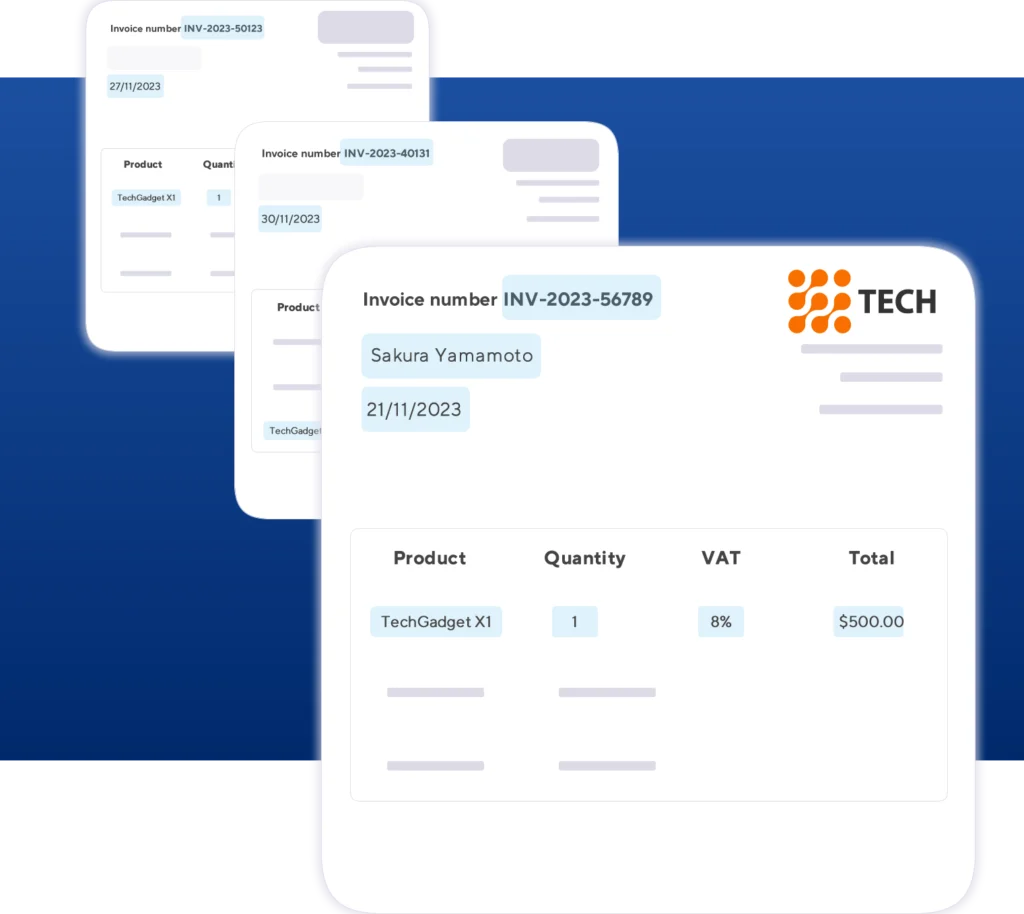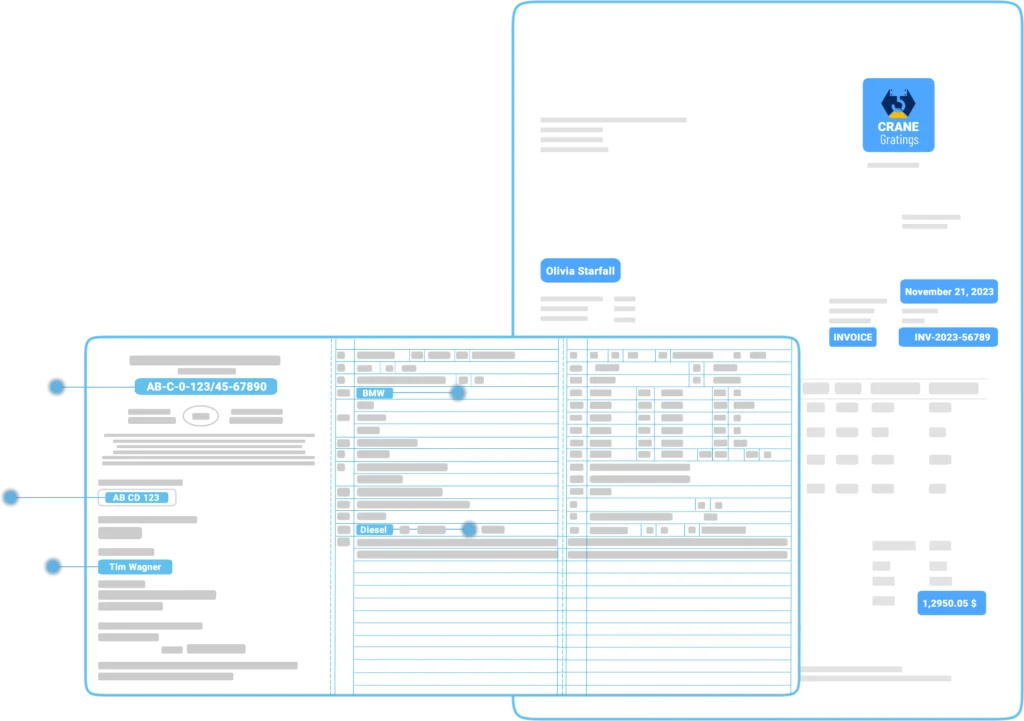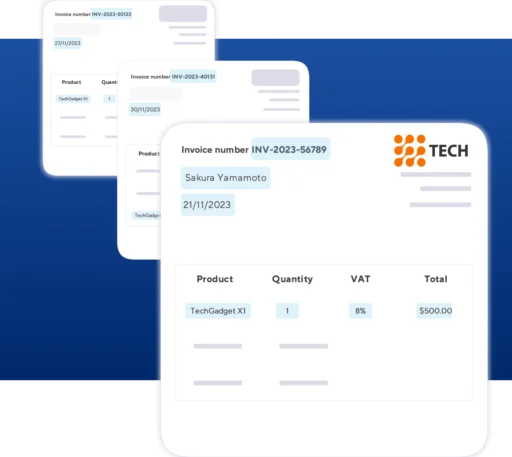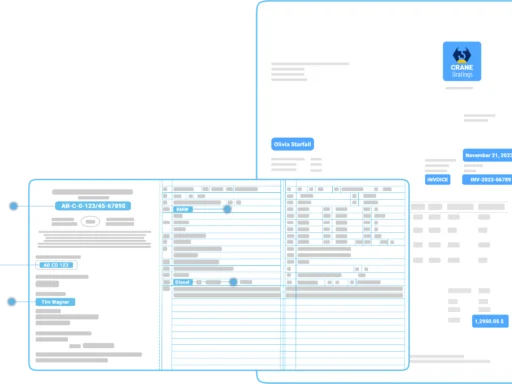By 2025, global data volumes are expected to reach 175 zettabytes. A significant portion of this data will be unstructured—like photos, emails, documents, and handwritten notes—necessitating the use of intelligent document processing software (IDP) to transform this data into actionable insights.
This guide on intelligent document processing will show you how IDP:
- enhances data optimization within organizations
- eliminates redundant tasks
- boosts productivity by supporting employees in their roles
It also covers how the technology works and its practical applications in today’s organizations.
Table of Contents
- What is Intelligent Document Processing (IDP)?
- Unstructured Data Challenges and Intelligent Document Processing (IDP)
- The Technologies Behind Intelligent Document Processing
- Where is Intelligent Document Processing (IDP) applied?
- How Intelligent Document Processing Works with PaperOffice DataExtractor:
- The Top Benefits of Intelligent Document Processing
- Conclusion
What is Intelligent Document Processing (IDP)?
Intelligent Document Processing (IDP) is a workflow automation technology that transforms semi-structured and unstructured information from large data streams into accessible formats.
IDP scans, reads, extracts, categorizes, and organizes data from various sources and formats, facilitating efficient data management and analysis.

Unstructured Data Challenges and Intelligent Document Processing (IDP)
Unstructured data is difficult to store or index due to its lack of a fixed pattern, often leading to data capture issues. A reliable IDP system, however, can automate data processing and simplify information retrieval.
Primarily, IDP extracts valuable information from large datasets without the need for manual intervention or human involvement.
IDP solutions are extensively used in modern businesses for customer support, contract management, data extraction, and document processing, enhancing efficiency across various operations.
The Technologies Behind Intelligent Document Processing
The foundation of intelligent document processing (IDP) is artificial intelligence, supplemented by technologies such as Optical Character Recognition (OCR), Computer Vision (CV), and Natural Language Processing (NLP).
Optical Character Recognition (OCR): OCR converts printed, typed, or handwritten text into a computer-readable format. Although OCR is intelligent, it is limited to interpreting only what it “sees.” Thus, OCR relies on artificial intelligence to derive insights from the data.
Computer Vision (CV): CV, a subfield of AI, focuses on understanding and extracting information from digital images. Unlike OCR, which is centered on text recognition, CV analyzes the layout of documents to identify and extract specific data fields from non-textual elements like tables or graphics.
Natural Language Processing (NLP): NLP enables companies to extract meanings from unstructured data, supporting rapid data analysis instead of requiring employees to spend hours looking for common issues in support requests.
Artificial Intelligence (AI): After being trained on extensive historical data, AI models are capable of making independent decisions and predictions.
These models learn to “understand” image data and process information from unstructured documents, analyzing the significance of textual data similarly to humans.

These technologies open up new possibilities in data processing and offer improved efficiency and accuracy in document handling.
Where is Intelligent Document Processing (IDP) applied?
Whether a company wants to digitize customer data, process invoices and payment receipts, or extract specific information from unstructured data, IDP software can perform these functions in seconds, across industries.
Applications of intelligent document processing include:
Accounting: IDP helps finance and accounting departments understand unstructured and semi-structured data by converting it into searchable data using technologies such as NLP, ML, OCR, and computer vision.
Banking: IDP is often used in banking, for example, to automate the processing of bank statements with more than 99% accuracy.
Human Resources: Simplifies complex administrative workflows in human resources by eliminating manual data entry.
Insurance: Leads to faster claims processing, improves fraud detection, and reduces operational costs.
Logistics: Helps classify, extract, and analyze unstructured data from all types of transport documents.
Legal: Supports legal service providers by archiving and reviewing documents, M&A papers, land registry entries, and compliance rules.
These technologies significantly improve the efficiency and accuracy of document processing by automating processes and enabling comprehensive analyses.
How Intelligent Document Processing Works with PaperOffice DataExtractor:
PaperOffice DataExtractor provides a versatile platform for intelligent document processing (IDP) that includes both NoCode and LowCode options as well as a comprehensive API for developers. Additionally, these solutions are available as OnPremise, Cloud (Swiss Cloud), or Hybrid installations, giving organizations full control over their data and systems.
Step 1 – Collection: Data is automatically collected from various sources and formats and prepared for processing.
Step 2 – Classification: PaperOffice DataExtractor automatically classifies information into relevant categories using its advanced AI systems.
Step 3 – Extraction: The software uses machine learning to precisely and fully automatically extract data from various contents.
Step 4 – Feedback and Validation: Extracted data is validated by AI, which independently identifies and corrects deviations and sources of error.
Step 5 – Integration: The validated data is seamlessly integrated into downstream systems to enable data-driven decisions and process optimizations.
By utilizing 100% AI-driven processes, PaperOffice DataExtractor ensures efficient and error-free document processing.
The Top Benefits of Intelligent Document Processing
Why are more companies adopting IDP for document processing? Firstly, the software eliminates manual data entries and reduces errors common in data-intensive industries. Other benefits include:
Increased Data Accuracy: IDP minimizes human errors in document transcription, ensuring precise data for successful decision-making and risk management.
Enhanced Efficiency: Automation simplifies the task of evaluating unstructured data, significantly boosting productivity.
Improved Customer Satisfaction: IDP speeds up processing times in customer-facing operations like insurance and mortgage services, leading to quicker response times.
End-to-End Data Security: Intelligent document processing platforms invest in top security practices to ensure data integrity.
Large-Scale Information Processing: IDP handles large volumes of documents without the need for additional staff resources.
Conclusion
Intelligent document processing software supports some of the world’s largest data-driven companies by automating the processing of unstructured and semi-structured documents with over 99% accuracy.
PaperOffice Trial Version
Test the award-winning PaperOffice for 14 days without obligation at:
https://www.paperoffice.com
Social Media
Facebook: https://www.facebook.com/paperoffice.en
Twitter: https://twitter.com/PaperOffice_en
LinkedIn: https://www.linkedin.com/company/paperoffice-smart-ai-suite
PaperOffice ComDesk
Find out more at:
https://help-en.paperoffice.com
YouTube
► http://www.youtube.com/c/PaperOfficeEN
PaperOffice Blog
https://blog-en.paperoffice.com
Benjamin Kluge ist seit über 6 Jahren bei PaperOffice im Bereich der Automatisierung dank KI-Implementierung tätig. In seiner Freizeit verfasst er Artikel über Intelligente Dokumentenverarbeitung (IDP) und teilt sein Fachwissen zu den neuesten Trends in der Automatisierung und künstlichen Intelligenz.








